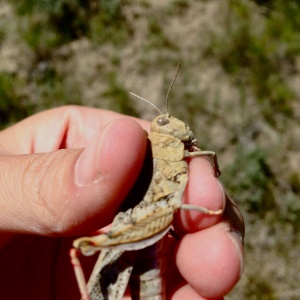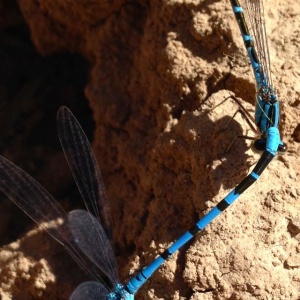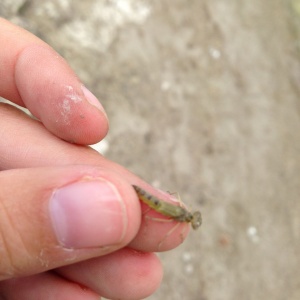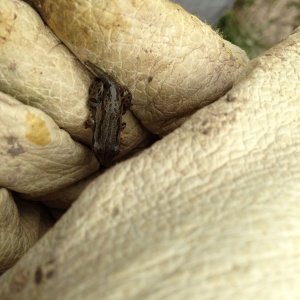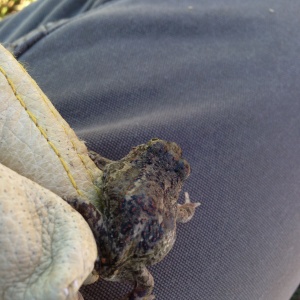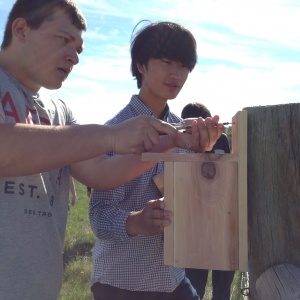I remember reading through the CLM blog after submitting an application, feeling very curious and eager to imagine what my life could look like in just a few months. And I also remember trying to de-code all of the acronyms people were using and figure out what it was that they were doing, as I had never worked for a government agency and was fresh out of undergrad.
AIM (Assessment, Inventory and Monitoring) is a method that the BLM is now using to monitor natural resources, make better management decisions, and contribute to long-term monitoring of the land and the vegetation that occupies it.
In a nutshell: At each site, three 25-meter transects run in different directions from a central point. At multiple points along those transects, many measurements are taken such as soil stability and canopy gaps. Species richness is calculated for the site, and a 1-meter deep pit is dug to determine the composition of the horizons, the soil’s texture and color. Knowing the common species of plants in your area makes it go a lot faster, but even then, each site takes the crew about 2.5 hours, sometimes 3 (depending on how easy it is to navigate to the site). I enjoy going out with them to AIM and am starting to recognize most common species; my appreciation and admiration for both the botanists and the plants they study has grown immensely.
As the office is pressed for time to get all sites surveyed, we get the chance to help out as much as we can, even if it is just to help record data. For the most part, however, the two other wildlife interns and I are focussing on our amphibian project. We have over 200 locations that we need to navigate to and assess the quality/suitability of the habitat. Finding the locations is the most time consuming part, but also the most adventurous and fun.This need for navigation has led to daily practice with GIS/GPS software, a great skill to take with you wherever you go. Also, we are now all experts in barbed-wire fence climbing, two-track finding and gate-opening, other useful skills to have in life, certainly. 
Often the sites we survey are stock ponds, but when we are lucky, we get to trek through stream beds and river banks searching for any life form of amphibians: egg masses, tadpoles, metamorphs, and adults. Before this internship, I did not have a lot of experience with amphibians (other than hunting for them and keeping them as pets as a kid), but have since enjoyed the opportunity to thoroughly research the biology and life history of these organisms. It’s always an exciting day when we find frogs.
Nearly all of the frogs that we have found thus far are Boreal Chorus Frogs (Pseudacris maculata). Just two days ago, my co-intern Lara found the first (what we think) Boreal Toad! It was a juvenile which made it more difficult to identify, but the red spots appear to be indicative of the western boreal (Anaxyrus boreas). Miles from any permanent source of water or forested area, we found this toad to be quite the enigma as they are generally absent from dry, shrub-steppe habitat.
In addition to the amphibians, there is undoubtedly something new to see and discover each day. Knowing this has continued to fuel a sense of wonder and curiosity, as well as eagerness to wake up and go into work each morning.
- a spider eating a mating damselfly!
- damselfly larvae
- boreal chorus frog metamorph
We’ve also had opportunities to participate with other spontaneous and miscellaneous projects. One of the Biologists that works permanently at the Pinedale field office, Teresa, invited us to help set up bluebird houses with the local 10th grade class. I loved the chance to interact with the community and to share some cool facts about bluebirds with the students. They all seemed eager and excited to be there, which was great to see and a blast to be a part of.
- juvenile Boreal Toad
- 10th grade students mount a bluebird house












